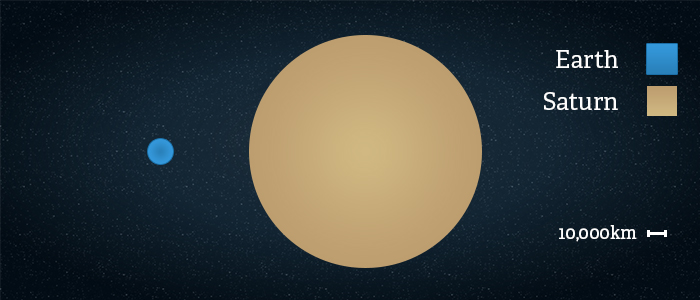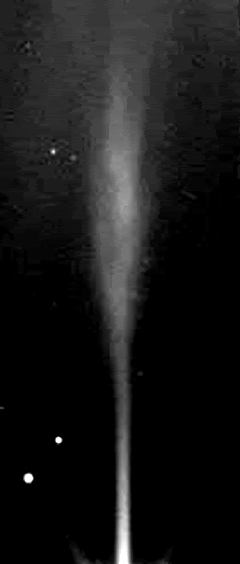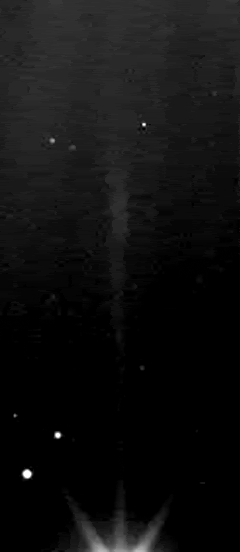It looks like you're using an Ad Blocker.
Please white-list or disable AboveTopSecret.com in your ad-blocking tool.
Thank you.
Some features of ATS will be disabled while you continue to use an ad-blocker.
share:

Over my time as a Conspiracy theorists there have been numerous accounts of Conspiracy theorists stating there is possibly "intelligent activity" in SATURN Space. It would be amazing to find out there are crafts within the SOL System appearing as moons

In October 2016, NASA's Cassini spacecraft captured of its last looks at Saturn and its main rings. Nearly three years later, astronomers have announced the discovery of 20 small moons orbiting Saturn, bringing the planet's total up to 82.
Today, astronomers announced that they have discovered 20 more moons around Saturn, bringing its total number to 82—the most for any planet in the solar system. The massive haul comes just over a year after astronomers announced 12 new moons orbiting Jupiter, but with the latest finds, Saturn’s retinue now surpasses Jupiter’s 79 known natural satellites.
www.nationalgeographic.com...
Very interesting thread showing this object
W00039343
27 Nov 07
emitting something...
Seen here
W00039357
27 Nov 07
W00039356
27 Nov 07
W00039355
27 Nov 07
W00039354
27 Nov 07
www.abovetopsecret.com...
W00039343
27 Nov 07
emitting something...
Seen here
W00039357
27 Nov 07
W00039356
27 Nov 07
W00039355
27 Nov 07
W00039354
27 Nov 07
www.abovetopsecret.com...
Thanks ATS member mikesingh
edit on 10/8/19 by Ophiuchus 13 because: (no reason given)
Hopefully in time more detailed information about SOL System moons are catalogued for studying.
edit on 10/8/19 by Ophiuchus 13 because: (no
reason given)
originally posted by: PurpleFox
I don't understand how these moons haven't been found before?
They are tiny.
Saturn’s newfound moons are all about three miles wide. They are so faint, they lie just about at the detection limit for the Subaru telescope, a facility atop Hawaii’s Mauna Kea volcano used in their detection.
a reply to: Ophiuchus 13
So, I just read the thread you suggested and went back to an earlier thread a year earlier about the same topic in 06’. I’m pretty sure I have looked at these before but never voiced an opinion.
Space ships 30,000 miles long in saturns rings? That’s a lot to swallow. What are your thoughts on that. He said a lot of things over the years but that is a doozy.
Reminds me over a thread where bbt are dream makers and earth ships are flying up to connect with them so the galactic space force can zoom thru space. That was also a lot to swallow.
Thoughts?
Oh and both those ideas were from different users.
So, I just read the thread you suggested and went back to an earlier thread a year earlier about the same topic in 06’. I’m pretty sure I have looked at these before but never voiced an opinion.
Space ships 30,000 miles long in saturns rings? That’s a lot to swallow. What are your thoughts on that. He said a lot of things over the years but that is a doozy.
Reminds me over a thread where bbt are dream makers and earth ships are flying up to connect with them so the galactic space force can zoom thru space. That was also a lot to swallow.
Thoughts?
Oh and both those ideas were from different users.
edit on 8-10-2019 by TheAlleghenyGentleman because: (no reason given)
originally posted by: moebius
originally posted by: PurpleFox
I don't understand how these moons haven't been found before?
They are tiny.
Saturn’s newfound moons are all about three miles wide. They are so faint, they lie just about at the detection limit for the Subaru telescope, a facility atop Hawaii’s Mauna Kea volcano used in their detection.
Thanks for this 👌🏼
a reply to: moebius
Three miles wide sounds like they need a demotion and a long talk with pluto about where they fit into in this crazy universe.
I just looked briefly and couldn’t find it. What are the size parameters to being a moon? Is it detailed or very abstract?
Three miles wide sounds like they need a demotion and a long talk with pluto about where they fit into in this crazy universe.
I just looked briefly and couldn’t find it. What are the size parameters to being a moon? Is it detailed or very abstract?
originally posted by: TheAlleghenyGentleman
a reply to: Ophiuchus 13
Space ships 30,000 miles long in saturns rings? That’s a lot to swallow. What are your thoughts on that.
30,000 mile craft is a large size object either natural (a piece of a planet or moon) or unnatural... Considering the size of SATURN in comparison to EA*RTH.

If there is intelligent activity there it wouldn't be too farfetched to consider what the potential technology there could build. I'm not saying it's there, I am saying off world technology may build things faster and more complex then on world here.
Good question
a reply to: moebius
Three miles wide sounds like they need a demotion and a long talk with pluto about where they fit into in this crazy universe.
I just looked briefly and couldn’t find it. What are the size parameters to being a moon? Is it detailed or very abstract?
Three miles wide sounds like they need a demotion and a long talk with pluto about where they fit into in this crazy universe.
I just looked briefly and couldn’t find it. What are the size parameters to being a moon? Is it detailed or very abstract?
a reply to: Ophiuchus 13
Just in case you're interesting in what's actually going on in that picture.
solarsystem.nasa.gov...
You can get a better version of that image here:
solarsystem.nasa.gov...
Just in case you're interesting in what's actually going on in that picture.
When the cameras take an image of something like a moon with a very bright Saturn just out of view, light shining from the planet can reflect off parts of the inside of the camera and onto the sensor. The inside of each camera is coated with a black non-reflective substance to minimize this scattered light. Still, some light does get in and the result can be rays or large fuzzy circles of light.
solarsystem.nasa.gov...
You can get a better version of that image here:
solarsystem.nasa.gov...
new topics
-
Geddy Lee in Conversation with Alex Lifeson - My Effin’ Life
People: 26 minutes ago -
God lived as a Devil Dog.
Short Stories: 42 minutes ago -
Happy St George's day you bigots!
Breaking Alternative News: 2 hours ago -
TLDR post about ATS and why I love it and hope we all stay together somewhere
General Chit Chat: 3 hours ago -
Hate makes for strange bedfellows
US Political Madness: 5 hours ago -
Who guards the guards
US Political Madness: 8 hours ago -
Has Tesla manipulated data logs to cover up auto pilot crash?
Automotive Discussion: 9 hours ago
top topics
-
Hate makes for strange bedfellows
US Political Madness: 5 hours ago, 14 flags -
whistleblower Captain Bill Uhouse on the Kingman UFO recovery
Aliens and UFOs: 14 hours ago, 11 flags -
Who guards the guards
US Political Madness: 8 hours ago, 10 flags -
1980s Arcade
General Chit Chat: 16 hours ago, 7 flags -
Deadpool and Wolverine
Movies: 17 hours ago, 4 flags -
TLDR post about ATS and why I love it and hope we all stay together somewhere
General Chit Chat: 3 hours ago, 3 flags -
Has Tesla manipulated data logs to cover up auto pilot crash?
Automotive Discussion: 9 hours ago, 2 flags -
Happy St George's day you bigots!
Breaking Alternative News: 2 hours ago, 2 flags -
God lived as a Devil Dog.
Short Stories: 42 minutes ago, 1 flags -
Geddy Lee in Conversation with Alex Lifeson - My Effin’ Life
People: 26 minutes ago, 0 flags
active topics
-
Republican Voters Against Trump
2024 Elections • 286 • : some_stupid_name -
-@TH3WH17ERABB17- -Q- ---TIME TO SHOW THE WORLD--- -Part- --44--
Dissecting Disinformation • 617 • : F2d5thCavv2 -
Hate makes for strange bedfellows
US Political Madness • 31 • : ByeByeAmericanPie -
God lived as a Devil Dog.
Short Stories • 1 • : FlyersFan -
Happy St George's day you bigots!
Breaking Alternative News • 13 • : BedevereTheWise -
"We're All Hamas" Heard at Columbia University Protests
Social Issues and Civil Unrest • 243 • : FlyersFan -
Candidate TRUMP Now Has Crazy Judge JUAN MERCHAN After Him - The Stormy Daniels Hush-Money Case.
Political Conspiracies • 725 • : Justoneman -
SC Jack Smith is Using Subterfuge Tricks with Donald Trumps Upcoming Documents Trial.
Dissecting Disinformation • 108 • : Threadbarer -
So this is what Hamas considers 'freedom fighting' ...
War On Terrorism • 226 • : FlyersFan -
Geddy Lee in Conversation with Alex Lifeson - My Effin’ Life
People • 0 • : gortex







